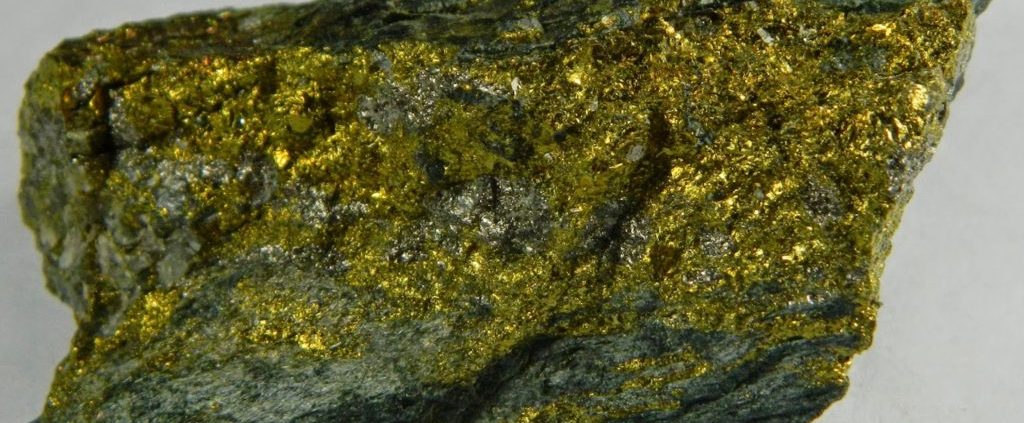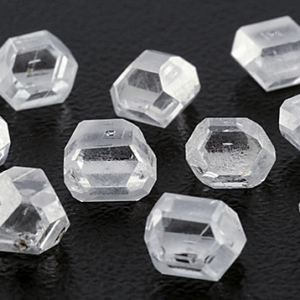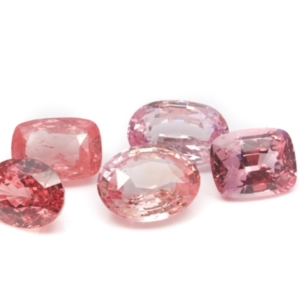Chalcopyrite
Chalcopyrite is a mineral and ore of copper. Its chemical composition is CuFeS2, meaning it contains copper (Cu), iron (Fe), and sulfur (S). Chalcopyrite is one of the most important copper ores and is widely distributed in various geological environments. It is often found in association with other sulfide minerals.


Color: Chalcopyrite typically has a brassy yellow to golden-yellow color, although it can tarnish to various shades of blue, purple, or green due to the oxidation of its surface.
Crystal Structure: Chalcopyrite crystallizes in the tetragonal system, forming distinctive tetrahedral-shaped crystals. These crystals often have a metallic luster.
Hardness: It has a hardness of approximately 3.5 to 4 on the Mohs scale, which makes it relatively soft compared to some other minerals.
Streak: When scratched on a streak plate, chalcopyrite leaves a greenish-black streak.
Cleavage: Chalcopyrite exhibits poor cleavage, meaning it doesn’t break along well-defined planes like some other minerals.
Magnetism: Chalcopyrite is weakly magnetic, and it can exhibit some magnetic properties due to its iron content.
Associations: Chalcopyrite is commonly found in association with other minerals such as pyrite (fool’s gold), sphalerite (a zinc ore), galena (a lead ore), and various copper minerals.
Economic Importance: Chalcopyrite is an essential source of copper. Copper is a valuable metal used in various industries, including electronics, construction, and plumbing. Extracting copper from chalcopyrite involves complex metallurgical processes.
Occurrence: Chalcopyrite can be found in various geological settings, including porphyry copper deposits, hydrothermal veins, sedimentary rocks, and skarn deposits. It can occur in a wide range of environments and is a common mineral in many parts of the world.
Tarnish: Over time, chalcopyrite can develop a tarnish or iridescent coating on its surface due to exposure to air and moisture. This tarnish is often referred to as “peacock ore” because of its colorful and iridescent appearance.
Chalcopyrite is of significant economic and scientific interest due to its copper content and its role in understanding ore formation processes. It is also a popular mineral specimen among collectors for its striking appearance when it exhibits colorful tarnish.
Contents
- Chemical Composition and Crystal Structure
- Physical Properties of Chalcopyrite
- Optical Properties of Chalcopyrite
- Geology and Mineralogy
- Occurrence and Distribution
- Mineralogical characteristics and identification methods
- Application and Uses Areas
- Summary of key points
- References
Chemical Composition and Crystal Structure

Chalcopyrite has a chemical composition of CuFeS2, which indicates that it is composed of copper (Cu), iron (Fe), and sulfur (S) atoms. It is a sulfide mineral, with copper and iron being the main cations and sulfur as the anion.
Crystal Structure: Chalcopyrite has a unique crystal structure that belongs to the tetragonal system. It has a complex structure consisting of copper and iron atoms bonded with sulfur atoms in a crystal lattice. The crystal structure of chalcopyrite can be described as follows:
- Unit Cell: The unit cell of chalcopyrite is a parallelepiped shape with four sides of unequal length and four right angles.
- Coordination Geometry: Each copper atom in chalcopyrite is coordinated by six sulfur atoms in an octahedral arrangement, while each iron atom is coordinated by four sulfur atoms in a tetrahedral arrangement. The sulfur atoms are arranged in a close-packed manner.
- Sulfur Sublattice: The sulfur atoms in chalcopyrite form a close-packed sublattice, with copper and iron atoms occupying the interstitial sites between the sulfur atoms.
- Crystal Symmetry: Chalcopyrite has a tetragonal symmetry, with the space group I-42d or I-42m, depending on the temperature and pressure conditions.
The crystal structure of chalcopyrite gives it unique physical and chemical properties, including its metallic luster, opaque appearance, and characteristic brassy-yellow color. Chalcopyrite is known for its good electrical conductivity, which makes it an important mineral for copper extraction and various industrial applications.
Physical Properties of Chalcopyrite
| Color | Brass yellow, may have iridescent purplish tarnish. |
| Streak | Greenish black |
| Luster | Metallic |
| Diaphaneity | Opaque |
| Mohs Hardness | 3.5 |
| Specific Gravity | 4.1 – 4.3 |
| Diagnostic Properties | Color, greenish streak, softer than pyrite, brittle. |
| Crystal System | Predominantly the disphenoid and resembles a tetrahedron, commonly massive, and sometimes botryoidal. |
| Tenacity | Brittle |
| Fracture | Irregular/Uneven |
| Density | 4.1 – 4.3 g/cm3 (Measured) 4.18 g/cm3 (Calculated) |
Optical Properties of Chalcopyrite
| Anisotropism | Weak |
| Cleavage | Poor on {011} and {111} |
| Color / Pleochroism | Brass-yellow, may be tarnished and iridescent |
| Optical Extinction | |
| Twinning | Twinned on {112} and {012}, penetration or cyclic. |
Geology and Mineralogy

Geology of Chalcopyrite: Chalcopyrite is commonly found in a variety of geological settings, and its occurrence is often associated with copper-rich ore deposits. Chalcopyrite can form through various geological processes, including:
- Magmatic processes: Chalcopyrite can crystallize from a magma during the formation of igneous rocks, particularly in association with copper-rich intrusions. As the magma cools and solidifies, chalcopyrite can precipitate from the magma and accumulate in veins or disseminated throughout the rock.
- Hydrothermal processes: Chalcopyrite can also form through hydrothermal processes, where hot, metal-rich fluids percolate through rocks and deposit chalcopyrite along fractures, faults, or other structural features. Hydrothermal chalcopyrite deposits are often associated with volcanic or geothermal activity.
- Metamorphic processes: Chalcopyrite can also form during metamorphism, which is the process of rock transformation due to high temperature and pressure conditions. Chalcopyrite can occur as a primary mineral in metamorphosed sedimentary rocks or as a result of metasomatic replacement of pre-existing minerals.
Occurrence and Distribution
Chalcopyrite is a naturally occurring mineral that is widely distributed in nature. It is a copper iron sulfide mineral with the chemical formula CuFeS2. Chalcopyrite is often found in ore deposits associated with other copper minerals, as well as with other sulfide minerals.
Occurrence: Chalcopyrite is commonly found in a variety of geological environments, including:
- Vein deposits: Chalcopyrite can occur in veins, which are narrow, mineralized fractures in rocks. These veins can form in a variety of rock types, including igneous, metamorphic, and sedimentary rocks.
- Porphyry deposits: Chalcopyrite is often associated with porphyry copper deposits, which are large, low-grade ore deposits typically found in association with intrusive igneous rocks. Porphyry deposits are an important source of copper worldwide.
- Volcanogenic massive sulfide (VMS) deposits: Chalcopyrite can also occur in VMS deposits, which are formed by the precipitation of sulfide minerals from hot, metal-rich fluids associated with volcanic activity.
- Sedimentary deposits: Chalcopyrite can be found in sedimentary deposits, including sediment-hosted copper deposits, where copper minerals are deposited in sedimentary rocks, often in association with organic-rich layers.
Distribution: Chalcopyrite is found in many countries around the world. Some of the major chalcopyrite-producing countries include:
- Chile: Chile is one of the world’s largest producers of chalcopyrite, with significant deposits located in the Andes Mountains.
- Peru: Peru is another major producer of chalcopyrite, with deposits found in the Andes Mountains.
- USA: Chalcopyrite deposits are also found in several states in the USA, including Arizona, Montana, and New Mexico.
- Canada: Canada has significant chalcopyrite deposits, particularly in British Columbia and Ontario.
- Australia: Chalcopyrite is found in various parts of Australia, including Queensland, New South Wales, and South Australia.
- China: China also has significant chalcopyrite deposits, with production mainly concentrated in regions such as Inner Mongolia, Xinjiang, and Tibet.
- Other countries: Chalcopyrite is also found in many other countries, including Mexico, Russia, Zambia, and Kazakhstan, among others.
Overall, chalcopyrite has a widespread occurrence in nature and is an important source of copper, which is used in various industrial applications.
Mineralogical characteristics and identification methods
Mineralogical characteristics and identification methods of chalcopyrite:

- Color: Chalcopyrite typically exhibits a brassy-yellow color, although it can also appear as a tarnished or iridescent surface due to weathering. The color can vary depending on impurities and weathering conditions.
- Luster: Chalcopyrite has a metallic luster, resembling the luster of polished brass or gold. The reflective, shiny surface is a characteristic feature of chalcopyrite.
- Crystal habit: Chalcopyrite commonly occurs as well-formed crystals with a tetragonal shape, often in the form of tetrahedrons or pyritohedrons. It can also be found as massive, granular, or disseminated aggregates.
- Hardness: Chalcopyrite has a hardness of 3.5 to 4 on the Mohs scale, which indicates that it is relatively soft and can be easily scratched by harder minerals.
- Streak: The streak of chalcopyrite is usually greenish-black to black, which is different from its brassy-yellow color. This streak can be observed by rubbing the mineral against an unglazed porcelain plate and examining the color left behind.
- Cleavage and fracture: Chalcopyrite has poor cleavage along the {001} plane, meaning that it does not break along well-defined planes. Instead, it exhibits a conchoidal or uneven fracture, which means that it breaks with a curved, shell-like surface.
- Specific gravity: The specific gravity of chalcopyrite typically ranges from 4.1 to 4.3, which is relatively high and can help in distinguishing it from other minerals with similar appearances.
- Chemical tests: Chalcopyrite is a copper-bearing mineral, and its copper content can be confirmed through various chemical tests, such as the use of a copper flame test or chemical reactions with acid, which can produce characteristic greenish-blue color or effervescence.
- X-ray diffraction (XRD): XRD is a common method used to identify chalcopyrite, as it can provide information about the crystal structure and mineral composition of the sample. Chalcopyrite has a unique tetragonal crystal structure, which can be detected by XRD analysis.
- Microscopic examination: Microscopic examination using a polarizing microscope can reveal the mineralogical characteristics of chalcopyrite, such as its crystal morphology, optical properties, and associations with other minerals.
Overall, a combination of various mineralogical characteristics and identification methods, such as color, luster, crystal habit, hardness, streak, cleavage and fracture, specific gravity, chemical tests, XRD, and microscopic examination, can be used to identify chalcopyrite accurately.
Application and Uses Areas

Chalcopyrite has several industrial uses due to its copper content and other properties. Some of the major industrial uses of chalcopyrite include:
- Copper production: Chalcopyrite is the most important source of copper ore, and it is primarily used for the extraction of copper. It is usually processed through crushing, grinding, and flotation to separate the copper minerals from the gangue minerals. The extracted copper can then be used in various applications, including electrical wiring, plumbing, electronics, and construction materials.
- Metal alloy production: Chalcopyrite is sometimes used as a source of copper in the production of metal alloys. Copper is alloyed with other metals, such as zinc, nickel, and tin, to create alloys with desired properties, such as improved strength, corrosion resistance, and heat resistance. These alloys are used in various industries, including automotive, aerospace, and electronics.
- Sulfuric acid production: Chalcopyrite contains sulfur, and it can be used as a source of sulfur for the production of sulfuric acid, which is a widely used chemical in various industrial processes. Sulfuric acid is used in the production of fertilizers, dyes, detergents, and other chemicals, as well as in the mining industry for leaching metals from ores.
- Gemstone and jewelry: Although chalcopyrite is not a common gemstone, it is sometimes cut and polished for use in jewelry and ornamental objects. Chalcopyrite’s metallic luster and distinctive brassy-yellow color can make it an attractive gemstone for collectors or for use in unique jewelry designs.
- Research and scientific purposes: Chalcopyrite is also used in research and scientific studies, particularly in the fields of mineralogy, geochemistry, and materials science. Its unique crystal structure, properties, and behavior under different conditions make it a valuable mineral for studying various geological and chemical processes.
Overall, chalcopyrite is an important industrial mineral due to its copper content and other properties, and it finds various applications in industries ranging from metallurgy to chemicals, gemstones, and scientific research.
Summary of key points

- Chalcopyrite is a mineral that is the most important source of copper ore.
- It has a brassy-yellow color, metallic luster, and typically occurs as well-formed crystals with a tetragonal shape.
- Chalcopyrite has a hardness of 3.5 to 4 on the Mohs scale, a streak that is greenish-black to black, and a specific gravity ranging from 4.1 to 4.3.
- Chalcopyrite is used primarily for copper production, as it contains copper as a major component and is processed to extract copper for various industrial applications, including electrical wiring, plumbing, electronics, and construction materials.
- Chalcopyrite is also used as a source of sulfur for sulfuric acid production, in metal alloy production, as gemstones and jewelry, in metaphysical and healing practices, and in research and scientific studies.
- Identification methods for chalcopyrite include color, luster, crystal habit, hardness, streak, cleavage and fracture, specific gravity, chemical tests, X-ray diffraction (XRD), and microscopic examination.
References
- Mindat.org. (2019). Bornite: Mineral information, data and localities.. [online] Available at: https://www.mindat.org/min-727.html [Accessed 4 Mar. 2019].
- Handbookofmineralogy.org. (2019). Handbook of Mineralogy. [online] Available at: http://www.handbookofmineralogy.org [Accessed 4 Mar. 2019].



Leave a Reply
Want to join the discussion?Feel free to contribute!